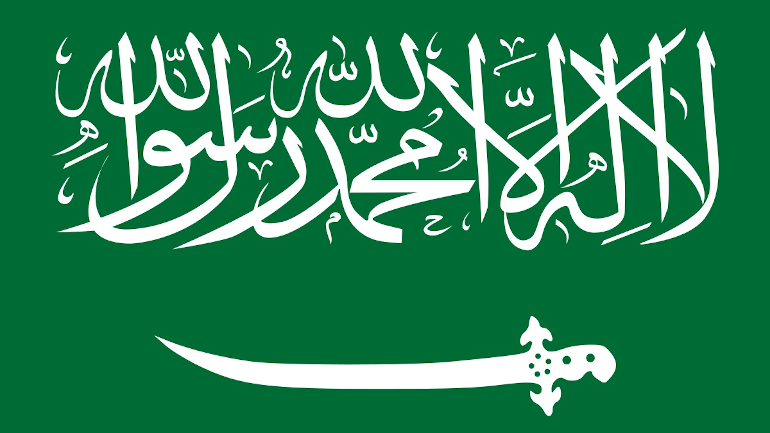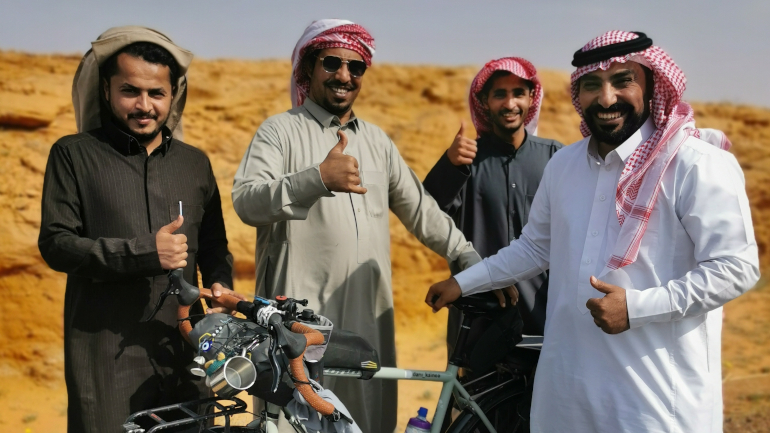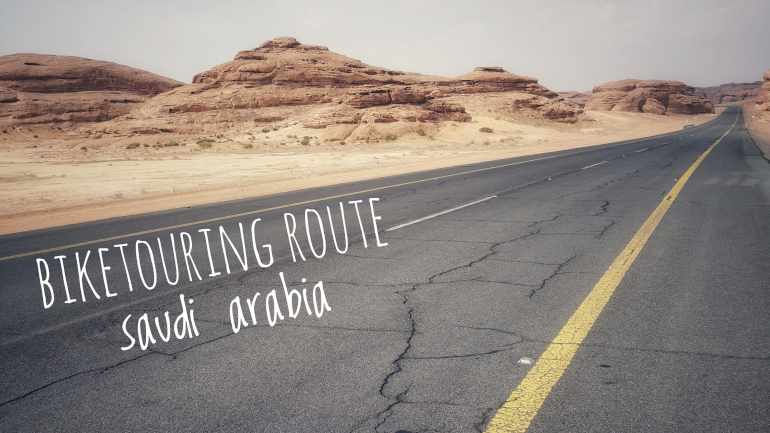Contents [hide]Intro
Tourist visas are a new thing in Saudi Arabia. In the end of 2019 the country introduced an e-Visa program with the aim to make it as easy to visit the country as their neighboring Arab countries. It’s a pristine travel destination lacking some tourist infrastructure but still fairly easy to travel. Take this guide along with you and go experience the warm welcome from the people of Saudi Arabia.
Visa application
You can see the visa policy for Saudi Arabia at Wikipedia.
I applied for my Saudi Arabian visa here. The portal is very well made, intuitive and the application is easy to fill. This was the fastest eVisa I ever applied for. A few seconds after submitting my application, I had the eVisa in my inbox.
The eVisa has a duration of stay of 90 days with multiple entries. It is valid for a year from the date of issue. Your 90 days starts counting from the day you enter the country.
As part of the eVisa you are required to sign up for medical insurance and this makes the visa fee very high. I paid 535 SAR. They still need to fully incorporate this health insurance plan because after visiting a hospital I know for a fact that they don’t recognize the health insurance you get with the visa. I am still looking for an official guide on how to use their visa health insurance and will update this section once I get it.
Border crossings
I used the Rub’ al Khali border crossing between Oman and Saudi Arabia. The Omani side was quickly done. On the Saudi Arabian side, I had to give my fingerprints and get a photo taken. At the customs section, I handed over my passport and had to wait half an hour until I got it back. There were no interviews or any issues. Very straightforward and easy border crossing and I didn’t even have to present my eVisa.
There are ferry connections between Saudi Arabia and Egypt from Duba and between Saudi Arabia and Sudan from Jeddah. I used the ferry connection to Egypt. The ferry ticket system is not very transparent or digital at all. I picked up my ticket in Duba and there should be daily departures. There are multiple ticket offices in town and they all seem to charge the same price. I used Bassam Shipping. Be aware of extra charges applied - the Saudi honesty does not exist there and you need to push back (my ticket was USD 100 for a single person on a recliner seat). For a detailed trip report look here. If you want to organize your ticket before arriving in Duba you can try these contact details:
- Bassam Shipping
- Basil Bassam Affashah (Deputy General Manager
- +966 58 151 1101
- basil@bassamdubagroup.com
- bassam@bassamdubagroup.com
- info@bassamdubagroup.com
- www.bassamshipping.com
SIM card
I got my SIM card at a small supermarket in the Empty Quarter. I had to show my eVisa and give a fingerprint scan. No need for a passport. I got an STC SIM card and went for a basic package with 9 GB data and local minutes for around 90 SAR. The data was split between local data and social media data.
There is an Android app for STC which lets you monitor your data usage. I could not recharge my balance with an international credit card through the app. I had to go to a mobile phone shop where they quickly and easily recharged my balance. You should be able to do this in most larger supermarkets as well.
Via the STC Android app I could buy additional packages. I paid 100 SAR for a visitor package valid for 3 weeks with 45 GB local data and 480 local minutes. You can check out their other packages and deals on prepaid SIM cards here.
The local minutes included in the package did not work for me. Everytime I tried to call a local number I got an automated response saying that I didn’t have sufficient balance.
In my opinion STC still needs to improve on their tourist SIM cards and I would suggest looking into other vendors. Two alternatives for tourists are Zain KSA and Mobily. They both have an android app so you can compare prices for call and data packages and also look into features offered via their apps.
Budget
Spending on food can be kept on an affordable level if you for example stick to Pakistani restaurants along the highways. They are often located next to gas stations and here you will pay around 25 SAR for a decent and filling meal (portion of dal or chickpeas with roti and a soda). In Riyadh, I went to fast food places getting a large quality falafel sandwich with a soda for 15 SAR. At very basic highway eateries I got breakfast consisting of karak, bread, a plate of beans with omelet on the side for 20 SAR. All of this is on the very low end of the scale and if you go for restaurants expect to pay a lot more. My daily average spending on food and water was somewhere between 15 and 20 EUR.
Accommodation is scarce outside of larger cities. Hostels are close to impossible to find outside of Riyadh. I was suggested to try to find worker barracks and use their dormitory rooms but never tried it. Hotel rooms for single travelers is not a thing in Saudi Arabia so expect to pay for a room catering for 2 or more people. The lowest priced hotel room I could find was 40 EUR and many places the level was 50 EUR for a room for a night.
Wild camping
Wild camping is accepted in Saudi Arabia. I asked several police officers and they said wild camping was no problem. They even said it was acceptable to sleep in city parks. There exists a rich Bedu culture where a nomadic lifestyle using tents is common so locals are familiar with camping in the wild. If you camp close to a residential area do ask some locals for permission before you pitch your tent out of respect and politeness - I can almost guarantee you that they will not say no and perhaps you will experience some magical Saudi Arabia hospitality and get invited to stay in their guestroom.
Saudi Arabia is a vast country and you can easily find wild camping spots almost everywhere. Be aware that many highways are fenced off to keep camels from crossing the roads. On long highway stretches you can sleep against the fence (which does not give you a quiet night) or find gas stations and ask for permission to pitch your tent on their premises.
Some wild camping spots will only offer you a loose gravel or sand surface. Try to locate some more solid ground to anchor your tent. Winds can pick up quickly and be fiercely strong.
ATM and money exchange
ATMs are widespread in larger cities. I used my VISA card without any issues and no ATM fees were applied. You can pay with credit cards in general at supermarkets and at most shops in larger cities. Carry cash for grocery stores, gas stations and smaller eateries in between cities.
I crossed the border between Oman and Saudi Arabia at the Rub Al-Khali border crossing. I had an ATM on the Saudi Arabian side and was able to withdraw cash. Omani Rials are valid as payment in Saudi Arabia (I was told this by truck drivers used to crossing the country even though I believe it’s only valid for the border region) and I successfully paid at gas stations and eateries in the Empty Quarter. I was given close to market rates on the exchange from Omani Rials to Saudi Riyals.
Dress code
Saudi Arabia is a conservative muslim country when it comes to dresscode. The country itself gives a very relaxed instruction on dress code which only prohibits revealing clothing which means showing off shoulders and knees. As a guest I believe it’s our responsibility to respect the country’s culture which also means covering up.
For women sleeveless shirts, short dresses, loose tops, crop tops and miniskirts are strictly not allowed. Bikinis are taboo in Saudi Arabia even if you go swimming on the beaches. The traditional black gown which Saudi Arabian women wear, known as the Abaya, is not required to be worn by the visitors. However it is highly recommended to be worn as a respect to Saudi Arabian Culture. Both Saudi Arabian and foreign women are free to wear the hijab and niqab.
Traveling on a bike, it can be difficult to follow this dresscode as a woman. My advice is to wear a loose fitting and long sleeved shirt together with some baggy pants. All in light fabrics of course due to the warm temperatures. If you want to be extra respectful, you can throw on an abaya and cover your hair while not on the bike and in public places. This will for sure earn you some praises from the locals and prevent harmful stares.
For men the traditional Arabic thobe or thawb is not compulsory for Saudis or foreigners. The dress code is somewhat more relaxed for men. Wearing shorts and t-shirts in public is optional (as long as shoulders and knees are covered) but not advised and it is not allowed in public governmental offices and mosques. Men must not be shirtless under any circumstances. I covered up my arms wearing long sleeved t-shirts and always had baggy shorts covering my knees with leg-sleeves under so no skin from arms or legs were shown. I was told this was acceptable by several locals.
Besides this, it is not advised to wear visible gold jewelry except from a wristwatch or a wedding ring. If you are wearing religious jewelry depicting other religions than Islam, then make sure to tuck this well away so it is not visible. Avoid wearing shirts with indecent or loud graphics and quotes on it.
This might sound very restrictive but you will get used to it very quickly and it should not be difficult to find something in your wardrobe that fits the requirements. Just after a few days in Saudi Arabia following the dresscode felt like second nature to me. Also, the sun is brutal and it may be a very good idea to cover up for just that reason alone.
Opening hours and prayer times
Supermarkets, gas stations and grocery stores are normally open during day hours. However, many other shops first open at 16 in the afternoon.
It was only a couple of years ago where it was mandatory for shops to close during prayers. Even though it is optional nowadays, you will still see about half of the stores closing for prayers. Many have signs saying “closed for prayers” so you don’t think they are closed for the entire day. The shops only close for 15-30 minutes. If you have ordered food, local Saudis will respectfully wait for you to finish your meal but if you hear the call to prayer from a nearby mosque, you can show some respect by finishing up quickly or grab it for take away.
The prayer times are determined by the specific position of the sun in the sky which means the prayer times will be different on each day. From day to day the time only changes by a minute or so but because of the changing time I found this prayer schedule to be helpful.
Ramadan
Fasting from dawn to sunset during Ramadan is one of the five pillars of Islam and is mandatory for all healthy Muslims in Saudi Arabia. However, there are some exemptions: young children, sick individuals, travelers, and women who are pregnant, nursing or menstruating.
As a non-muslim traveler you should respect the fasting during the month of Ramadan which means no eating, drinking or smoking in public. If you are traveling on a bicycle you should be exempt from fasting and drinking water and eating should be allowed in theory but perhaps it would be best to seek local advice on acceptable behavior if you happen to be in Saudi Arabia during Ramadan.
As the Islamic calendar is based around the lunar cycle, the month of Ramadan rotates by approximately ten days each year so you will have to consult a Ramadan calendar to figure out the beginning date of the fasting for a given year.
Road safety and police escorts
Saudi Arabia has one of the highest number of road fatalities in the world. Although road conditions and safety standards are improving fast the statistics still look grim. They say themselves that they are going into a war zone when they drive their cars in the bigger cities. However, most of the main roads have a wide shoulder and here you should be safe. If you encounter roads without a shoulder, pay extra attention and consider riding in the gravel or just hitchhiking a ride.
Some regions have their own traffic police whose sole job is to secure the roads and prevent accidents. This also means they will escort you. Take this as a VIP treatment and nothing else. I was escorted for 24 hours a day on the roads to and after Riyadh for a total of three days.
Many roads are monitored by cameras which automatically catches people driving too fast and also spots drivers using their phone while driving. It is clear that Saudi Arabia is doing a lot to improve but they are still very far away from German standards. Please take care if you are cycling on a road without any shoulder.
VPN and WhatsApp calls
To my surprise, social media apps were not blocked in Saudi Arabia. WhatsApp calls on the other hand are blocked (normal text messaging in WhatsApp works just fine) and you will need a VPN to bypass the block. To my knowledge, Saudi Arabia, does not block VPN providers so you can choose freely between the alternatives.
Banned items
You are traveling in a muslim country so be aware of the following banned articles which you are not allowed to bring into the country which some of them being unique for Saudi Arabia:
- Alcohol
- Symbols, books or artwork of other religions than Islam
- Politically sensitive material and other material critical of the government or royal family
- Pork products (I’m not quite sure about this one so better check if you plan to bring it with you)
- Pornographic material or any publications showing off women in less than conservative clothing
Useful web resources
I found these web links to be useful during my planning and travels in Saudi Arabia:
Best time to visit
From November to March you have bearable day time temperatures. Rest of the year you have daily temperatures above 40 degrees and high humidity along the coast.
In the mountain regions of Tabuk and high plateaus around Ha’il, night temperature gets surprisingly low. Check the regional temperatures for the month you are traveling to be sure you bring sufficient clothing.
biketouring saudi arabia
2023-03-14 | blog
Biketouring blog covering Saudi Arabia and the roads from the Empty Quarter to the Red Sea Coast
biketouring route saudi arabia
2023-03-16 | itinerary
Biketouring route for Saudi Arabia covering the roads from the Empty Quarter to Riyadh and then further on to Ha’il where I drop down towards Al Ula and
finally end up in Duba where there is a ferry connection to Egypt



